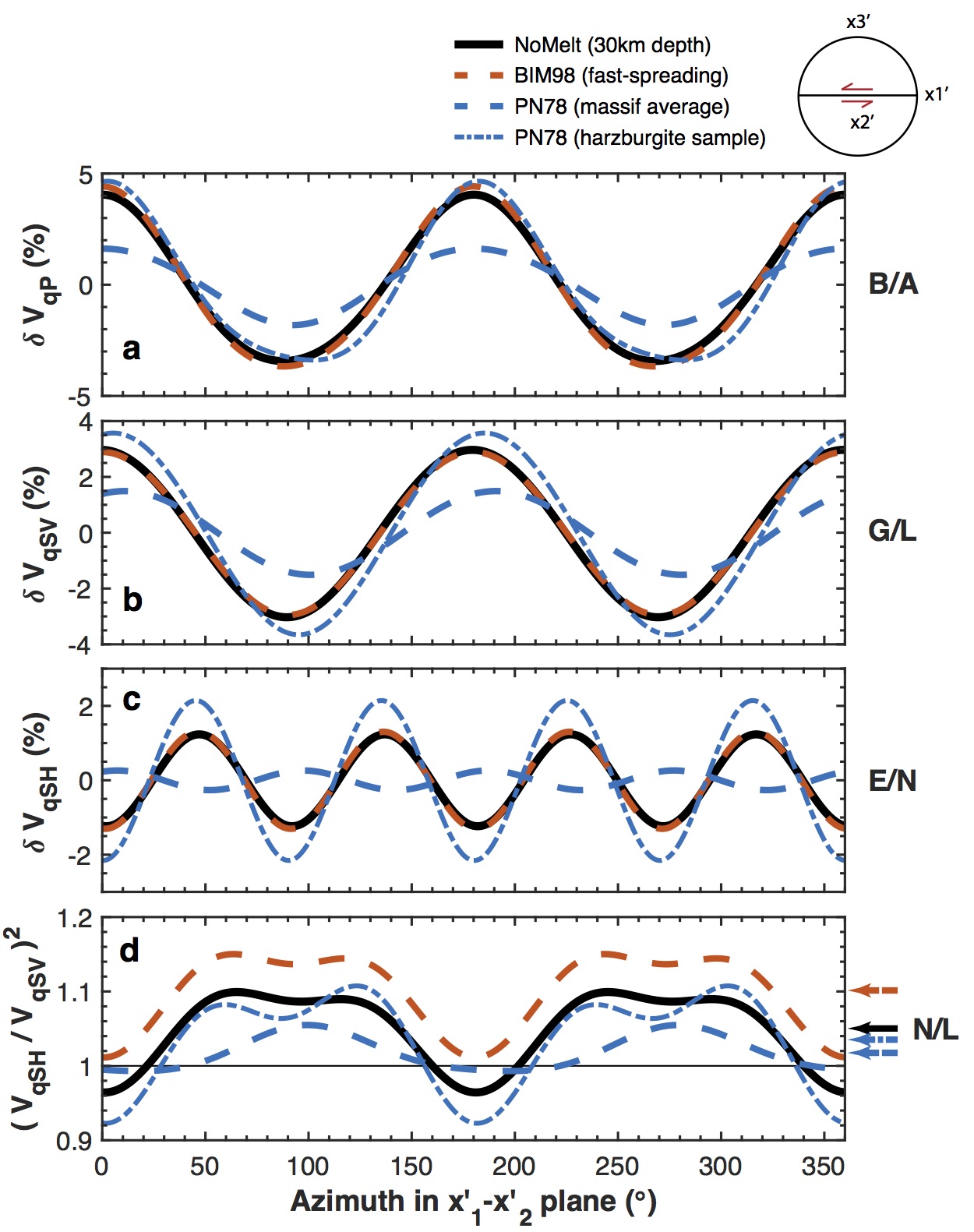
Seismic anisotropy offers perhaps the most direct observational window into convection in Earth’s mantle as well as the structure and formation of oceanic plates. The NoMelt experiment, located ~1000 km southeast of Hawaii, was designed to better understand the fundamental plate tectonic processes involved in the formation and evolution of oceanic plates by looking at a region far from complications due to upwelling or subduction.
Comparing to Petrofabrics
By measuring the complete set of anisotropic parameters for both Rayleigh and Love waves, we can for the first time compare the seismically derived elastic behavior of oceanic lithosphere with that directly measured from lithospheric rocks. We find excellent agreement in the anisotropic terms (see below) suggesting that we have truly bridged the gap between surface-wave and handsample length scales.

